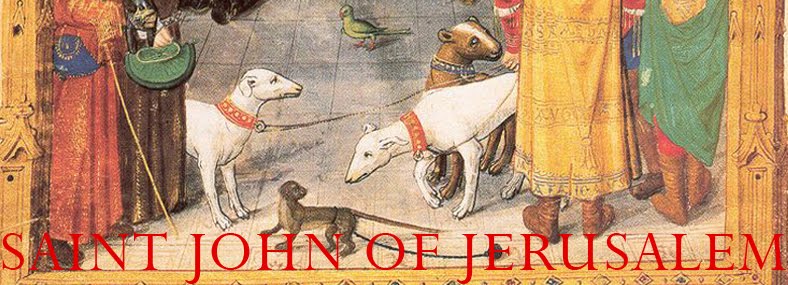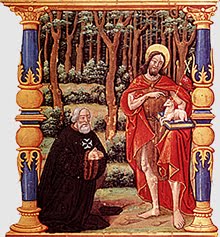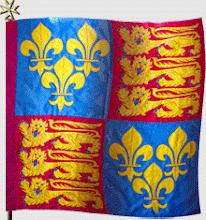HOLY SATURDAY REFLECTION
THE EASTER VIGIL
THE LITURGY in the form revised by Pope Pius XII in the 1950’s re-introduced the time of an evening celebration, begun after dark on Holy
Saturday evening. This is considered by some –incorrectly- to be the most
popular time of the celebration for the ancients. The missal indicates that the Church in Rome
where this liturgy was customarily celebrated was that of St John Lateran. This
great basilica was previously known as the Basilica of our Saviour and is the
mother church of all Christendom. It was the first great public place of
Christian worship specifically built as such in the fourth century by the
Emperor Constantine. There it was that in the centuries following the end of
the early persecutions of Christians, the new Roman converts were publicly
baptised and initiated into the mysteries of the Church. Submerged in the water
three times, in memory of the three days of Christ in the tomb, they emerged as
new members of His Church. They had symbolically died to sin to be brought back
to new life with Him.
THE liturgy of this night is the
richest and the most lengthy of all the great ceremonies of this week. It
begins in darkness and ends in light. This darkness is symbolic as well as
real. The light in this case is not natural but is the illumination of faith,
signified by a lighted candle. We have been led out of the bondage of ignorance
and slavery to sin to the light of truth and the freedom of the children of
God. This is nothing less than an expression in visible symbols of what has
happened to us in baptism. In the early centuries, as we know from study and
research, the ceremonies of baptism usually occurred during this celebration
and were an essential part of it. All the great themes of the struggle against
evil, and death its elder child, are apparent in the rites and prayers in use
in this liturgy. This evening, I would just like briefly to mention something
about the presumed origin of some of the rites and symbols associated with this
liturgy. I am indebted to the works of Dr Heinrich Kellner, Heortology, A History of Christian Festivals
and Mgr Louis Duchesne, Christian Worship,
both written in the first decade of the 20th century, for most of
these details.
THE very first part of the Vigil,
the blessing of the new fire, was unknown in ancient Rome. Kellner says it
originated in Germany, where it was known as the “Osterfeuer” and it was
introduced into Rome by Pope Leo IV (847-855).
Duchesne however, maintains that it came from the British Isles. From
there it was brought to Germany by the
British and Irish monks who were evangelists there in the eight century. This
is certainly more likely, for the ancient Celts are renowned for their
particular devotion to fires in their pagan rites. The Easter fires were always new and lit from
new flints. Rome had its own version of the new fire. On Maundy Thursday, all
the old oil from the church lamps in the Lateran Basilica was collected into
three large vessels containing wicks, which were placed in the corner of the
church. From these vessels all the candles and other lights used at the Easter
Vigil were lighted. The ceremony of taking the light from these vessels was
always solemn, being done at the Pope’s order by a bishop or a priest.
ANOTHER great symbol of the
Vigil, the Paschal Candle is of uncertain origin. Documentary evidence
indicates there was a blessing of the Easter candle in Spain. The fourth
Council of Toledo (633) recommends the adoption of this practice to the other
parts of the Iberian peninsula. It was seen as a symbol of Christ and was
blessed through the chanting of the praeconium
paschale or Exultet. This great
song of triumph is said to have been composed by St Augustine. We have some verses
“in laudem quadam cerei composed by
him in his opus De Civitate Dei ( xv;
22). The oldest form of the Exultet known
in later centuries always included an invocation of blessing on the Holy Roman Emperor.
This continued to form part of the praeconium
right up to the twentieth century although the last inheritor of that
dignity, Francis II of Austria abandoned it in 1804.
A TEXT from the early eight
century Gelasian Sacramentary (liturgy
of the court of Charlemagne with strong Roman elements) gives the text of one
of the most colourful of the these prayers of blessing for the candle. It came
originally from Southern Italy. The archdeacon announced the beginning of the
great festival, then called for a blessing on that luminous pillar which was
about to shed its radiance on the mysteries of the Christian Passover, as in
like manner of old the pillar of fire had gone before the children of Israel to
guide them in their wanderings in the desert. He dwelt poetically upon the
elements composing it, the papyrus which furnished the wick and the virgin oil
and the beeswax which formed the material. He then eulogised the bee, chaste
and fecund like the Virgin Mary, and which in the manner of its generation,
produced a type of the eternal origin of the Word of God. The scrolls upon
which these chants were written, were beautifully ornamented with pictures of
the various elements mentioned in the text and with a portrait of the reigning
sovereign. The pictures were upside down to the text so that as the scroll
gradually unfolded over the ambo or lectern, the people below could see the
pictures and appreciate them. The introduction of the ceremonies associated
with the Paschal Candle into the Roman Rite is generally attributed to Pope
Zozimus (417-418).
IN ancient times the
illuminations inside the Church were complimented by those outside and the
Emperor Constantine, in the fourth century, gave orders for the streets of the
capital to be illuminated during the Easter festival. The time of the celebration
varied throughout the centuries and in different places. The Roman Gelasian
Sacramentary of the early eight century (already mentioned) prescribes the time
of the Vigil as early on Saturday morning. It begins with exorcisms and
professions of faith for the neophytes and arrives at the blessing of the
candle and the baptisms at 2pm. The Gregorian Sacramentary (originally Roman
and later used in the Frankish kingdom) orders the time of the Vigil to
commence from 2pm. Manuscripts still in existence show that in medieval times
the lighting of the Paschal Fire took place on Saturday morning.
THE form of the ceremonial that
we shall participate in this evening is a distillation of so many different
elements that have formed it over many centuries. In its fourth century pure
Roman form it was relatively simple but impressive because it was done by the
Pope himself. In later centuries influences from all over Europe combined to
produce the varied and symbolic rite that we now possess. As we proceed with
this joyful liturgical pilgrimage through the centuries of Christian faith,
bear in mend the antiquity, sacredness and origins of much that you will see. Fire,
candle, the Easter canticle of blessing, the litanies, the Mass, all these parts
have not been the product of bureaucratic cutting and pasting by some supposed
expert with poor knowledge of custom and tradition and nothing much else to do.
Rather they have grown organically from the deep and devoted piety and usage of
centuries of faith. We here are all
privileged to both appreciate these often neglected realities and also to be
able to take part in this particular form of the Easter Vigil celebration.
ONE of the more regrettable
outcomes of the way we live now and the pressure of social customs that deny us
a fighting chance to keep Lent as we should, is that we are probably less well
prepared for Easter than we should be. I do not just mean that we have ignored
Lent altogether, but that we have probably had less time than we would like and
less freedom from our regular duties to devote ourselves sufficiently to the
rigorous preparation encouraged in years gone by. Nevertheless, we can
appreciate the plenitude of this solemnity and try to participate in it
enthusiastically. We also have the inestimable advantage of having elicited the
setting and venerable form of these ceremonies available to us by legitimate
authorization. This is a privilege that few of our fellow Catholics are in a
position to enjoy. Let us be grateful for that. Above all, we are not engaged
in thumbing through the dusty pages of archaic rituals in the exercise of
escaping from the terrible soullessness of the world in which we live. Rather
we are endeavouring to invest the present with a liturgical elixir which is
dynamic and vital and as relevant now as ever as it. That is so because it is
the fruit of piety and of centuries of patient development and orthodox conservation.
May we prove worthy of the treasures of liturgy in which we participate and
partake in the fruits of the Easter liturgy with humility and gratitude to God.
Surrexit Christus vere, Alleluia
Category (click to see all related):
Catholic life,
Faith












